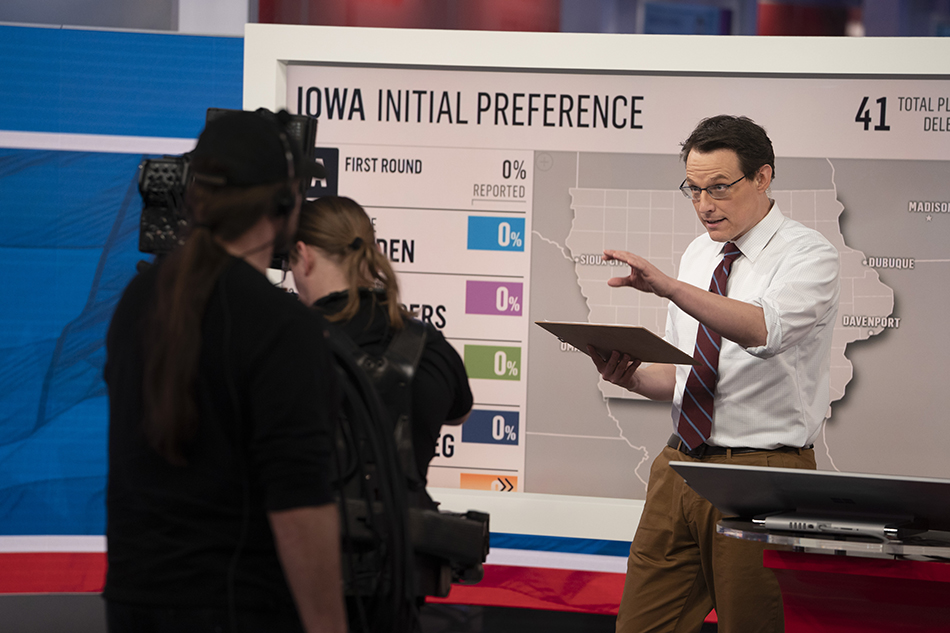The New Math of Election Coverage
Viewers will see significant changes in how networks report, analyze polls and results

Systems for calling races and data analytics, always a centerpiece of election-night coverage, will assume an even more important role Nov. 3 as part of an effort to overcome some of the widely publicized problems from 2016.
One issue: “Exit polls showed Hillary Clinton winning the race,” Associated Press deputy managing editor for visual and digital journalism Derl McCrudden said.
And Election Day exit polls typically didn’t take early voting into account. About 41% of ballots were cast before Election Day in 2016, with those figures expected to be much higher this year. The U.S. Elections Project at the University of Florida has reported as of Oct. 20, more than 35.1 million votes had already been cast in the 2020 general election. In some states, such as Wisconsin and North Carolina, the number of mail-in ballots received is already multiple times higher than 2016’s totaln Analysts have predicted more than 150 million votes will be cast in the election, up from 136.7 million in 2016.
RELATED: Cover Story: The Longest Night
The AP rethought its strategy and developed the AP VoteCast product with NORC at the University of Chicago. In 2018, the VoteCast team conducted nearly 139,000 interviews with registered voters in 50 states. In 2020, VoteCast is aiming to do some 140,000 interviews between Oct. 28 and Nov. 3.
In addition to VoteCast, AP plays a major role in collecting vote totals, deploying stringers at county election centers around the U.S. AP’s decision desk will help call some 7,000 races in 2020.
Those efforts will also supply AP with data that can be used to develop election-related stories and adds people on the ground to provide information on potential voting irregularities. “That will drive a lot of reporting, because we have that background data and know where stories are bubbling up,” McCrudden said.
Broadcasting & Cable Newsletter
The smarter way to stay on top of broadcasting and cable industry. Sign up below
“We know the stakes are unbelievably high this year,” David Bohrman, executive producer of CBS News’s 2020 election night coverage, said. “The American public is frankly confused about what election night is going to bring. How are their votes going to be counted? Are they going to be counted? And how long it will take? We have to step up with more and better tools to explain what is going on.”
As part of that effort, CBS News launched CBS News Battleground Tracker, surveying 100,000 people from all 50 states. On Nov. 3, the data will be used for the in-studio Election Night Tracker and the decision desk led by CBS News elections and survey director Anthony Salvanto.
Bohrman said CBS will be using a new multi-touch screen as well as dozens of displays and augmented reality tools to take advantage of the new data. “We’ll be using augmented reality in ways that will really clarify and help viewers understand what is going on,” he said.
RELATED: Streaming to the White House
At Fox News, Cherie Grzech, VP of politics and the Washington Bureau, said the Fox News Voter Analysis, conducted with AP, will be a marked improvement from exit polls and provide a wealth of survey data to analyze voting trends and attitudes. “We now have a much more robust system that involves questioning folks a few days prior to the election and then on Election Day,” she explained.
The network is also upgrading the way that data will be displayed, Alan Komissaroff, senior VP of news and politics at Fox News, said. There will be upgrades to the touch screen used by Fox News anchor Bill Hemmer to better display voting and survey data, improved augmented reality systems and new virtual reality features.
“Virtual worlds that can be set up now through video game software are now very compelling,” Komissaroff said. “While I don’t want to tip our hand too much, we will try to take people into hyper-realistic worlds to help tell the story.”
New studios at ABC and Univision will also enable innovative new augmented-reality systems.
“Election night is very graphics-driven, very studio-driven, so we have put a lot of focus on that part of it with a new set of augmented reality graphics to show the presidential, congressional and state races,” Lourdes Torres, senior VP of political coverage and special projects at Univision, said.
RELATED: Stations, Networks Eye Boom in Political Ad Spending
Marc Burstein, senior executive producer of ABC News Special Events, said ABC’s new studio will feature more than new systems for graphics and augmented reality. It is part of a wider effort to rethink how the results are displayed and reported.
“Under the vote totals in the past, you had in small, almost unnoticeable type the percent of precincts reporting,” he said. “This year, we will have it in big bold numbers and it won’t say percent of precincts reporting, it will say percent of expected vote in,” to better highlight how many actual votes have been tabulated.
“It’s a small detail, but it shows the kind of focus and attention we’re putting on the coverage,” Burstein said.
